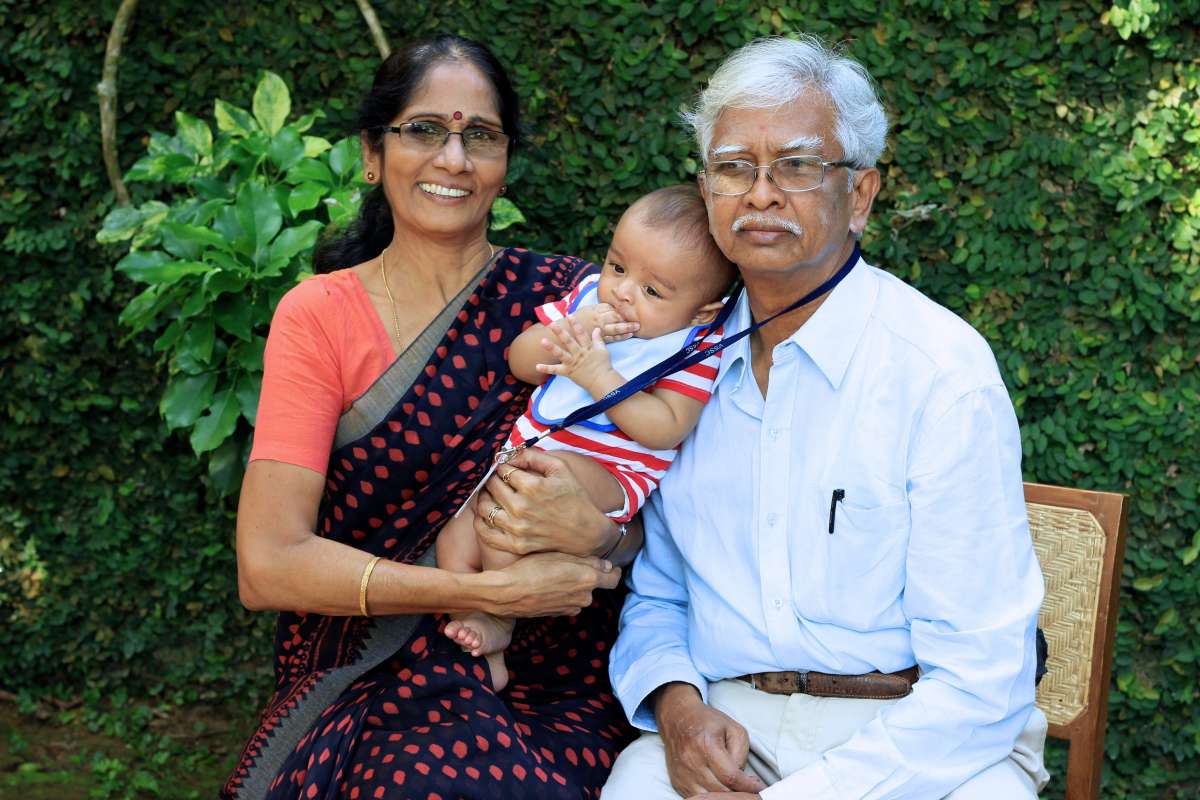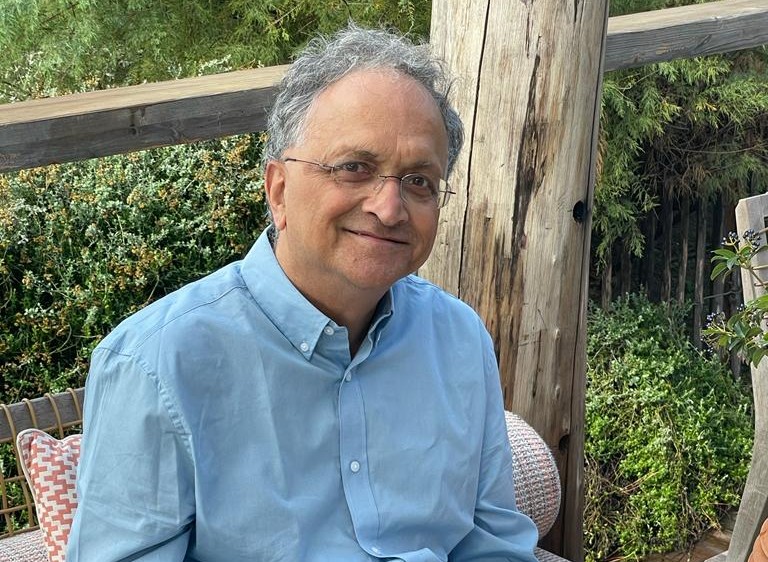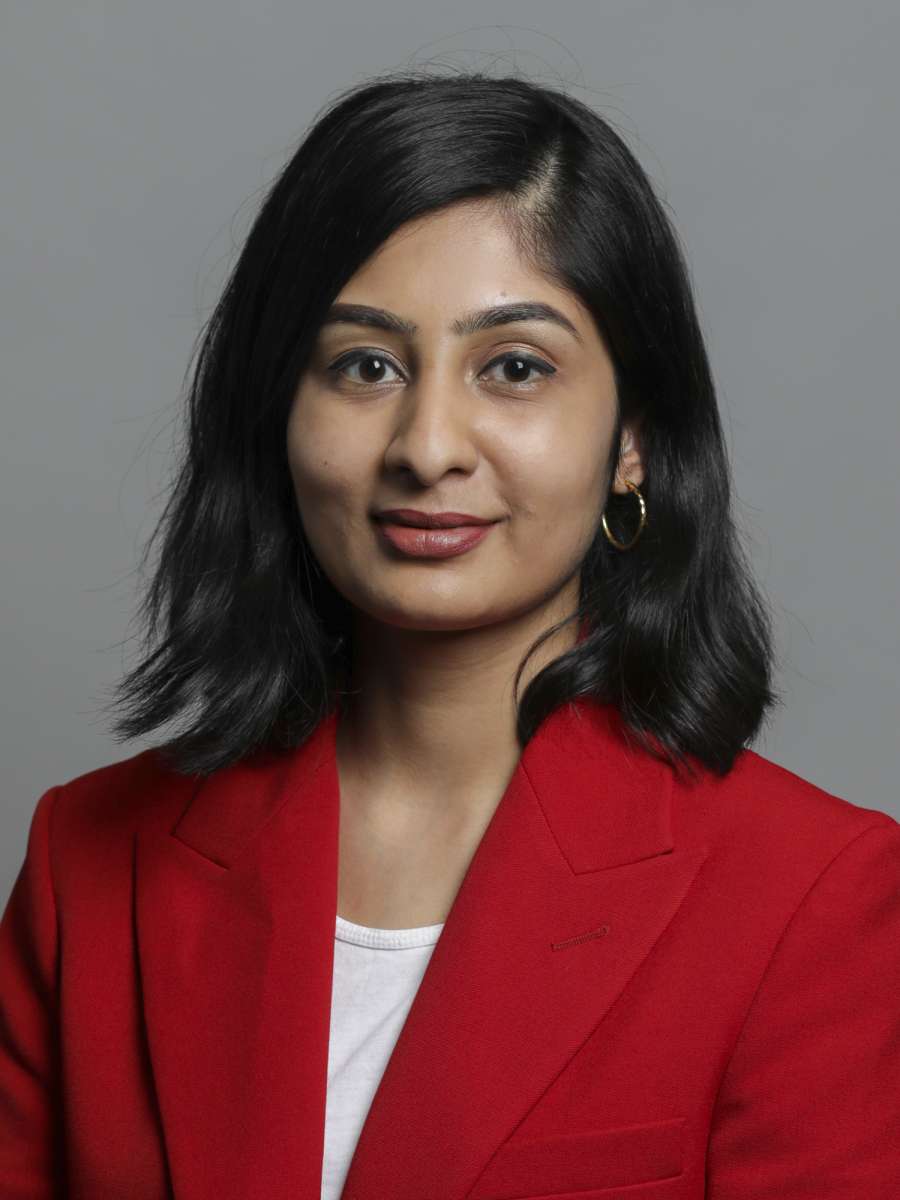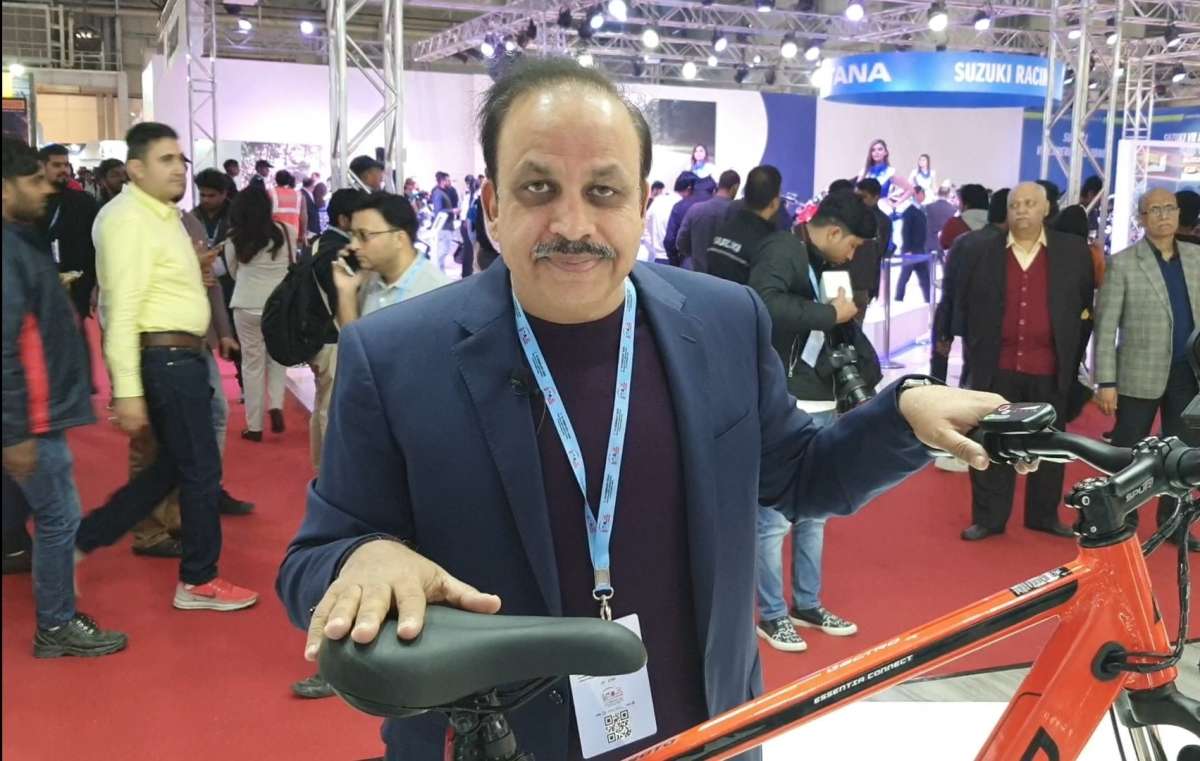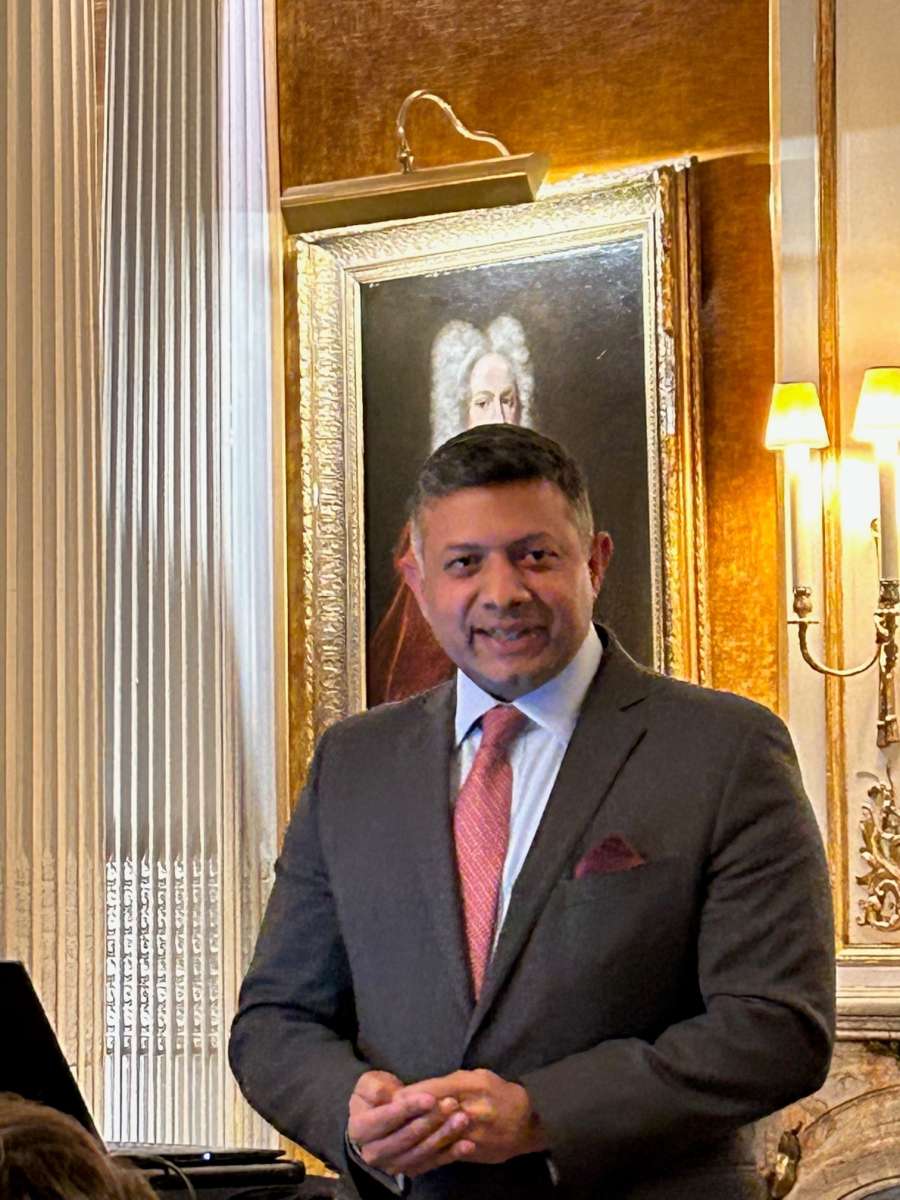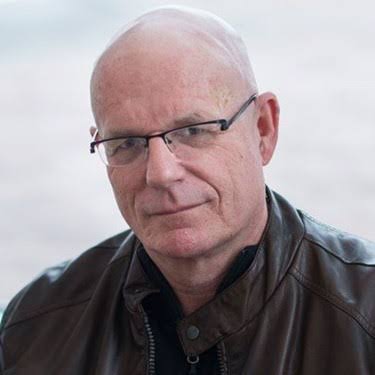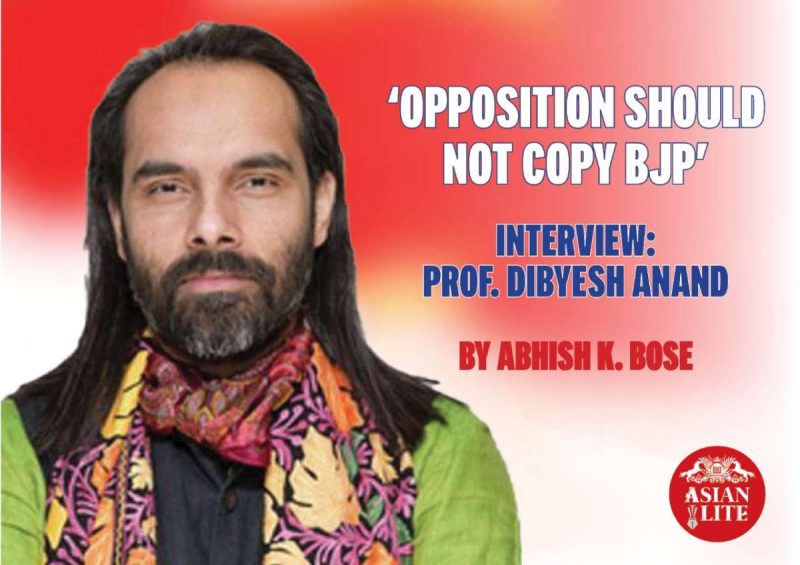Vipparthi Adimurthy is a former Satish Dhawan Professor and Dean of Research at the Indian Institute of Space Science and Technology (IIST). He is known for his contributions to the rocket technology and space dynamics. He is a recipient of Padma Shri from the Government of India. Murthy is the Mission Concept Designer, for India’s Mars Orbiter Mission. On the occasion of his Golden Jubilee association with ISRO, Khushboo Agrahari interviewed on his 50 years of successful journey.
Here’s the excerpt of the Interview taken:
You are known for your contributions to the rocket technology and space dynamics. You have been part of all major projects of the ISRO over the decades, including the Chandrayaan I. Tell us about your journey as a successful space scientist?
In March 1973, after finishing my Ph D from Indian Institute of Technology, Kanpur, I joined ISRO Space Science and Technology Centre (now called, Vikram Sarabhai Space Centre) in Trivandrum. I have a mutually fulfilling technical pursuit of five decades with ISRO. Even post-retirement, I continue my tasks as an ISRO Honorary Distinguished Professor.
I made very satisfying contributions in aerodynamics, flight dynamics, trajectory optimization, space-debris mitigation and interplanetary mission design, with significant impact on all our Indian space launches, starting from the very first satellite launch of SLV-3 led by Dr APJ Abdul Kalam, to Chadrayaan-1, Mangalyaan, and beyond. The space travel continues, as there is more to achieve in bringing the benefits of space to the development of mankind. A Vision for Indian Solar System Exploration till 2060s was formulated in 2017 by a Team led by me.
Tell us about your childhood. Was there anything at a very early age that nudged or pointed you toward an interest in science?
I was born on 5th May 1946 in Rajahmundry, an ancient town on the banks of Godavari. My parents, Suryanarayana Rao and Venkata Seetha Rajyam, had five children with me in the middle, after two elder brothers and followed by two younger sisters. I studied in schools in Gudivada, Guntur, Vijayawada and Rajahmundry because of father’s transferable job. During primary classes I got double promotions, and I finished 12th standard from Government Multipurpose School in Rajahmundry, when I was about to reach 15 years of age. The school had to get a special approval for me to sit in the board-examinations because of my under-age. Interestingly, I got State Rank No.2.
Teachers, throughout my life gave me great encouragement and inspiration; and even today I gratefully remember each one for their profound contributions to my knowledge base, and thinking process.
Noble thoughts come from many sides. At home I was encouraged by my parents to read many books; like Ramayana and Mahabharata and Telugu Translations of novels by Saratchandra Chattopadhyay. As a boy, I wrote a detective novel in which some culprits escaped to Moon in a rocket; the detective followed them in another rocket, and nabbed them on the moon

You often broadly speak on science and technology developments in Modern India with a particular focus on the space endeavors. What got you into Space Sciences?
The infinite glory and beauty of the cosmic panorama is a source of perennial happiness, curiosity and inspiration to us humans over the ages of our evolution on the planet Earth. Right from childhood we look at the moon and the stars and get fascinated by their presence. Every language has a lot of lullabies centered on moon. As already mentioned above, some of the books I read as a boy (for example the book by Joules Verne) gave me the initial inspirations on space and beyond. During my late teens, when I was pursuing my MSc course at Andhra University, the Comet Ikeya-Seki appeared in the sky. It was supposed to be one of the brightest comets seen in the last thousand years. Watching it was an inspiration that additionally enhanced my interest in space science and technology. The initial discoveries, which are the result of the new technological endeavors from the mid-twentieth century, point to the vast potential that exists for boundless knowledge and immense resource around our own solar system and beyond. Humanity has to continuously pursue this.
What you enjoyed the most and the least throughout your career as a Space Scientist?
Essentially, there is nothing like the most and least enjoyable aspects of my work. All scientific activities are equal stepping stones to move forward. During the five decades of association with the Indian Space Research Organization, I made contributions in aerodynamics, flight dynamics, trajectory optimization, space-debris mitigation and interplanetary mission design; and published more than 150 research papers in these fields.
As already indicated above, I contributed as a key member of India’s path-breaking Chandrayaan-1 mission. I successfully defended, in International Academy of Astronautics competitive process for Laurels for Team Achievement Award to Chandrayaan-1; and on behalf of ISRO team received the award in 2013 at Beijing. I also made significant contributions to Mangalyaan Mission, as Senior Advisor (Interplanetary Missions). Like this the activity list continues. All are of equal importance to me; and are equally and continuously enjoyable.
All these successes have not come without a learning process from our early faltering steps. Tell us about one of your best failures, that became a stepping stone for future successes from your career?
The launch vehicle technology is initially mastered in the learning and experimental phases involving SLV-3 and ASLV launch vehicles. All these successes have not come without a learning process from our early faltering steps. I can say that one of our best failures that was a stepping stone for future successes was our ASLV-D2 failure in July 1988. Up to 50 seconds after liftoff, the launch vehicle was moving upwards exactly as expected. But then in a matter of less than one second, the upper portion of the launch vehicle appeared to take a bend like the shape of an umbrella handle and broke up into pieces. There are a number of complex processes that influence the path of a satellite launch vehicle as it lifts off from the launch pad and in a few minutes time injects the satellites into orbit.All successful satellite launches are alike; but each failure of a launch is due to some specific and unique reason. The key to success is then to remove all possible sources of failure. This is the essence of Anna Karenina Principle. This is the essence of success in space endeavors.
Who inspires you? If you could have a dream job, what would that be?
I am ably supported by leaders in space technology who have inspired me with profound scientific interactions; and also, by colleagues and co-researchers with whom I worked over decades in the joint pursuit of making space endeavors contribute to universal progress of life and environment.
I have mentioned earlier about Tagore-Einstein Meetings. When Rabindranath Tagore and Albert Einstein met in 1930 at Einstein’s residence in Caputh near Berlin, Dimitri Marianoff, a colleague of Einstein, manually recorded their conversations. After their discussions, Marianoff described Tagore as: “the poet with the head of a thinker” and Einstein as: “the thinker with the head of a poet”.I am already in the job I dreamt about, no need to change.

What advice would you offer someone who wants a career like yours?
“Go ahead and do your best. Take up what interests you most, and handle it with utmost seriousness that is commensurate with your background. Doing your own best is doable, it is within your reach, and it is always a pleasure to reach it. But it requires will, concentration and planning.”
What accomplishment are you prouder of that’s not Space Science related?
I am a book-lover, lover of Nature, art lover, and generally admirer of anything that is extraordinary as well as ordinary in human endeavor. I try to perceive the complexity of everything that surrounds us, in the realms of the macrocosm and the microcosm. The unity of this complexity everywhere fascinates me. Many times, I feel that globally everything is the same; and at the same time all things are different in detail. This is a perplexing duality; but it may be indeed true. There are no specific accomplishments from me to high light and be proud of; but it is only the existence of a continuous thought process to acknowledge.
What’s your favorite space image?
There are many favorite images. I shall highlight here two of them. I very much like the concept of the Pale Blue Dot image of our Earth. This image was taken at the suggestion of Carl Sagan, by Voyager 1 on 14th February 1990. Voyager 1 was about 6.4 billion kilometers away when it captured this portrait of our Earth. I am also fascinated by the full-disk images of Mars and the images of Deimos (one of the two natural satellites of Mars) taken by our Mars Orbiter Mission MOM. This represents an important initiation of our planetary mission exploration.
What is your idea of Self- Perfection for people who follow their own hearts and make their own rules and sacrifices, to achieve higher and higher goals?
When you have a noble and lofty aim in your mind, you will not spare any trouble, hurdle or difficulty to reach towards your goal. Your body, mind and spirit will help you to make the rules and regulations that you have to make to achieve the stipulated end with a single-minded focus. This state of mind is the root of self-perfection. Many times, to achieve such goals, the ways and rules of life that are normally followed may not be sufficient. That is why our own rules and special sacrifices may have to be made. This is the path way to achieve excellence in all domains of life, be it science, social service, sports or any field you can conceive.
In the realm of Space Science and Technology, you often quote lines from the Poem “A Psalm of Life” by Henry Wadsworth Longfellow. Who is your favorite Poet? Tell us something about your interest in Poetry and Literature. Do you also like Telugu literature?
Great poems are available in every language and every culture. I read many inspiring poems in my school curriculum and beyond. “A Psalm of Life” is one of them.
In space endeavors, like in any other field, one has to learn from the knowledge discovered by great scholars of the past, and go forward following their footsteps and enhance the knowledge base further by our own little steps, based on the inspiration we derive from the previous efforts. This is succinctly focused in one of the stanzas of the psalm of life:
“Lives of great men all remind us
We can make our lives sublime,
And, departing, leave behind us
Footprints on the sands of time;”
Poetry and literature in general have the innate capacity to inspire. They also touch upon the many diverse aspects of life’s journey. As I already mentioned, every language had a great repository of literature. So, it is but natural that I am also in touch with literature in Telugu, which is my mother tongue. Almost continuously every day, some part or other, from this memory of literary influence, comes to the mind, to augment the current stream of thought process. I may also add that at home we have a personal library of a thousand and odd books of various genre, mostly in Telugu and English.
As the famous line goes “It is only with the heart that one can see rightly; what is essential is invisible to the eye.” What are your views on connection between Space Science and Spirituality?
This quotation is from the very famous book for children “The Little Prince” written originally in French (“Le Petit Prince”) by Antoine de Saint Exupery. More than a children’s book, it is a great philosophical novel, with a specific emotional influence on space travel. This is one of the most powerful and most translated books in the world; and is about the Little Prince who lived on the asteroid B612. A recent translation of this book in the year 2012 was into Sanskrit by Prof. Gopabandhu Mishra of Banaras Hindu University, which he did when he was a Visiting Professor of Sanskrit in Paris.
Any serious pursuit, be it in space science, or social science, or literary creativity, or in any other noble activity we have taken up, requires concentration of body, mind and soul with the target we have set. We have to set aside all other diversions, and fully concentrate on the aim we are pursuing. In this respect, it is no different from spirituality.
Do you believe that some of the planets in our solar-system holds the secrets of our past and the possibilities of our future to see? Also tell us if there is a place in the solar system where humans can colonize outside the Earth, what place would that be?
For the past generations covering several millennia, we and our forefathers lived on Earth, and hence it is but natural that we psychologically look at space from the point of view life and environment on our planet Earth. Looking from a vast cosmological perspective, and from the great observations that modern science and technology has allowed us to make in the recent decades, it appears obvious to me our planet is but one of the several millions of systems that exist. Their coexistence is a complex cosmological process with several dimensions and possibilities of commonality and variability. Life must exist elsewhere. It is statistically improbable that life, in various forms of primitive and advanced evolutionary levels does not exist elsewhere in the cosmos. Observations and material analysis of other planetary bodies will certainly give us more insights of these processes in the coming decades and centuries. Human colonies outside the Earth are also most likely to happen, out of curiosity in the initial phases, and in due course out of necessity as our Earth resources dwindle. Present studies in the world indicate that initial experiments in this direction may take place on Mars, and/or floating colonies over Venus.
Sir you hail from Rajahmundry, East Godavari joined the ISRO in 1973 and has been living in Kerala for last 50 years. Is there anything that you always miss about your native place? What’s that one thing you like about Kerala?
Trivandrum and the rest of Kerala is a uniquely beautiful place. We are comfortable with this environment; and we have no problem in continuing to live here. People of Kerala are in general friendly and have good history of mixing and living with people of other states and countries. And this psychology of co-existence is very useful.
We do visit our native place as often as possible or whenever needed. We also travel to many other places in the country, as well as outside, as the opportunities and necessities arise. So, there is no basic problem.
Sir you are quite well-known for your passion for cycling. You cycled all the way from your Thiruvananthapuram home to Sabarimala. Since when you fell in love with this pursuit?
Naturally, I learnt cycling as a boy. I remember the person who taught me cycling in Rajahmundry. His name was Mr. Yeleswara Rao; he was working in my father’s office. I also remember that unfortunately he died at a young age a few months after his marriage in a road accident, when a heavy vehicle crushed him to a wall while walking near the office. Statistically, I continue to observe that life is full of accidents. I regularly went to school on a cycle. While studying at IIT Kanpur, I used the cycle on the campus. Few years after taking the job with ISRO, at Trivandrum, I initially started using a cycle to go to office on holidays, instead of asking an office vehicle to come to residence and pick me up. It soon occurred to me that it would give me more freedom to work by going to office every day on cycle. For more than 35 years I do this, each day covering a distance of 16km or more. Even now, at the age of 76 years, I continue this. This is primarily my personal strategy for independence in daily travel and flexibly for work. Health and environmental benefits are secondary derivatives I receive.

Space debris is a huge concern. We have a list of satellites that poses danger to space missions as well as human lives. What strategy can be devised to tide over this crisis?
The last five decades of international space initiatives have left behind a multitude of space objects that no longer serve any useful function, but pose risk to space operations. Thus, space debris becomes an important subject for all space faring nations in particular and humanity in general. Space debris includes non-operational spacecraft, spent rocket bodies, material released during planned space operations, and fragments generated by satellite and upper stage breakup due to explosions and collisions. After 50 years of international space operations, nearly 40,000 objects have been catalogued. Catalogued objects are objects larger than 10-20 cm in diameter in Low Earth Orbits (LEO) of up to 2000 km altitude and 1 m in diameter in geosynchronous orbits; and they are regularly tracked and their orbital elements maintained in a database. Even much smaller debris objects can cause problems to space operations
The Inter-Agency Space Debris Coordination Committee, has identified two Protected Regions: Low Earth Orbit (or LEO) Region – and the Geosynchronous Region. This International body has also identified and recommended specific mitigation measures to contain the growth of space debris. Limiting Operational debris, reducing on-orbit break-ups, post-mission disposal into what are called as grave-yard orbits and on-orbit collision prevention are some of the major mitigation themes. Depending on the size and relative velocity of the impacting piece of debris, it can cause various degrees of damage to an operational spacecraft ranging from damage to the viewports, space suits, thermal protection system tiles etc. In critical situations, close-monitoring of the debris trajectory, and debris-avoidance manoeuvres by the spacecraft have to be done. In future, one will have to seriously consider active removal of debris from space.
What according to you are the future challenges in Human Interplanetary Habitat Missions?
The great departed genius, Prof. Stephen Hawking had very aptly stated the possibility and need for future of human colonies: “It is important for the human race to spread out into space for the survival of the species. Life on Earth is at the ever-increasing risk of being wiped out by a disaster, such as an asteroid collision, sudden global warming, nuclear war, a genetically engineered virus or other dangers we have not yet thought of. But once we spread out into space and establish independent colonies, our future should be safe.”
While his prediction is most likely to happen for the stated reasons, and also possibly for more extended reasons; there are many scientific, technical and humanitarian issues to be addressed and resolved appropriately. Some of the broad areas of that we should deeply research and find satisfying solutions are the fields of: 1) handling long-term radiation hazards, 2) Effects of long-duration isolation and confinement, 3) near-permanent separation from the familiar scenarios of planet earth, 4) Long term effects of micro-gravity, and 5) possible hostilities specific to the new planetary environment. As we move towards due solutions to these types of issues, we may also face new and presently unknown issues to be addressed.
Infinity is an abstract concept used to describe something that is endless or boundless. As I quote the lines from Ishavasya Upanishad:
The Concept of INFINITY.
That is WHOLE, This is WHOLE,
Form the WHOLE, emanates the WHOLE
When the WHOLE is taken out of the WHOLE
The WHOLE still remains the WHOLE.
What is your concept of Infinity. How you relate Infinity with SpaceScience?
The concept of infinity is something that I picked up soon after my high school days. As I already mentioned earlier, I happened to read during that period, ‘Introduction to Mathematical Philosophy’ by Bertrand Russell, and “One, Two, Three …Infinity” by George Gamow. From the poems of Tagore as well, I got a poetic perception of the endless (“On the seashore of endless worlds is the meeting of children”).
From the understanding of vastness of space from the new discoveries in the field of space science, one can get a glance of the infinite. Let us take the speed of light. In one second, light can cover a distance of more than seven times earth’s circumference; from earth to moon, it takes 1.25 seconds, from Sun to earth 8.3 minutes, from Sun to next closest star 4.24 years; across our milky way galaxy around 100,000 years; to the closest Andromeda galaxy about 2.5 million years; and to reach the limit of observable universe from earth, light takes around 13.8 billion years. How vast is this universe! Is it infinite? Infinity is bigger and it is endless.
An Infinite Set is a set which has a one-to-one correspondence with a proper subset of itself. Cantor had shown that some infinite sets are greater than others. These mathematical concepts on infinity are really very interesting and understandable.
My perception and fascination of infinity, which started very early in my life, have increased and got firmed up with my exposure to space science and technology in the ways I have described above.
Is there any particular experience you would call your defining moment in space?
My journey is a continuously happy, invigorating and satisfying one. On thy way there are many challenges, inspirations and solutions. I have taken them in my own style and enjoyed the trials and tribulations; as well as the rewards and admirations. In the long perspective, I can say all moments are defining moments, and are determined by the paths taken in the past; and the requirements perceived for the future. There are always some statistical uncertainties which make the journey somewhat more challenging. While deeply engrossed in the present, I have always kept the broad picture of life and contributions in the mind. So, I can say that there are no specific defining moments; but at the same time every work is a defining work.

To highlight this, I give here the translation I made of a great poem by noted Telugu poet, writer and Padma Bhushan and Jnanpith Awardee C Narayana Reddy who passed away on 12 June 2017. I translated his poem on the day his departure news has come. His original poem has continuously inspired me for several decades:
The Contrasts of Life
All around me darkness,
And I stand in the middle;
My heart is full of the garlands
I weave with flowers of light.
With brightness all round me
I stand in the middle;
My mind envisions the darkness
Of a million Amavasyas.
Standing at the bottom of the valley
I look up at the heavens above
And reckon that I live
On par with the lofty Pole star.
Sitting on the peak of the mountain,
I watch the universe around;
And imagine that I am falling down
The deep crevice of the netherworld.
This darkness and this light,
These peaks and these valleys,
I strangely entwine
Into the fabric of my life.
| Translation made by me on 13 June 2017 from Telugu Original of the inspiring poem by C Narayana Reddy |
A lot of the astronomical knowledge goes all the way back to the Vedic literature to the Samhitas and the Brahmanas. Do you think that Space is divine? Space is God’s presence in the world. In a way, Space is God?
The Vedic literature certainly embodies an excellent knowledge base. While I have a broad idea of their all-encompassing coverage, I did not have the opportunity to read and assimilate them in detail. As far as the concept of all pervading God, and the divinity of space; I agree with the idea of divinity of everything that exists, in all the levels of the macrocosm and the microcosm.
ALSO READ-INTERVIEW: PROF. SUBIR SINHA


